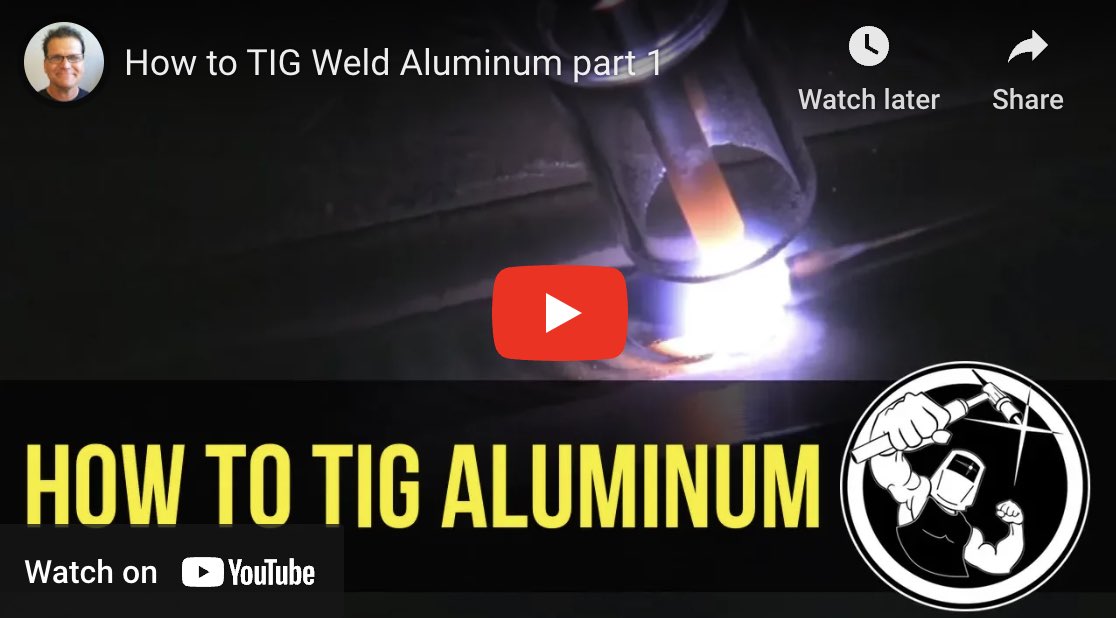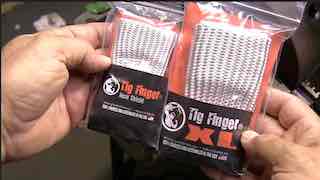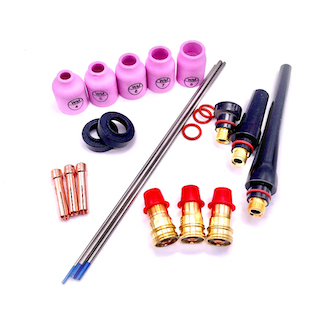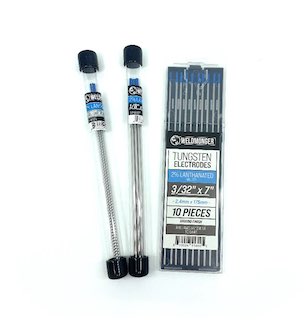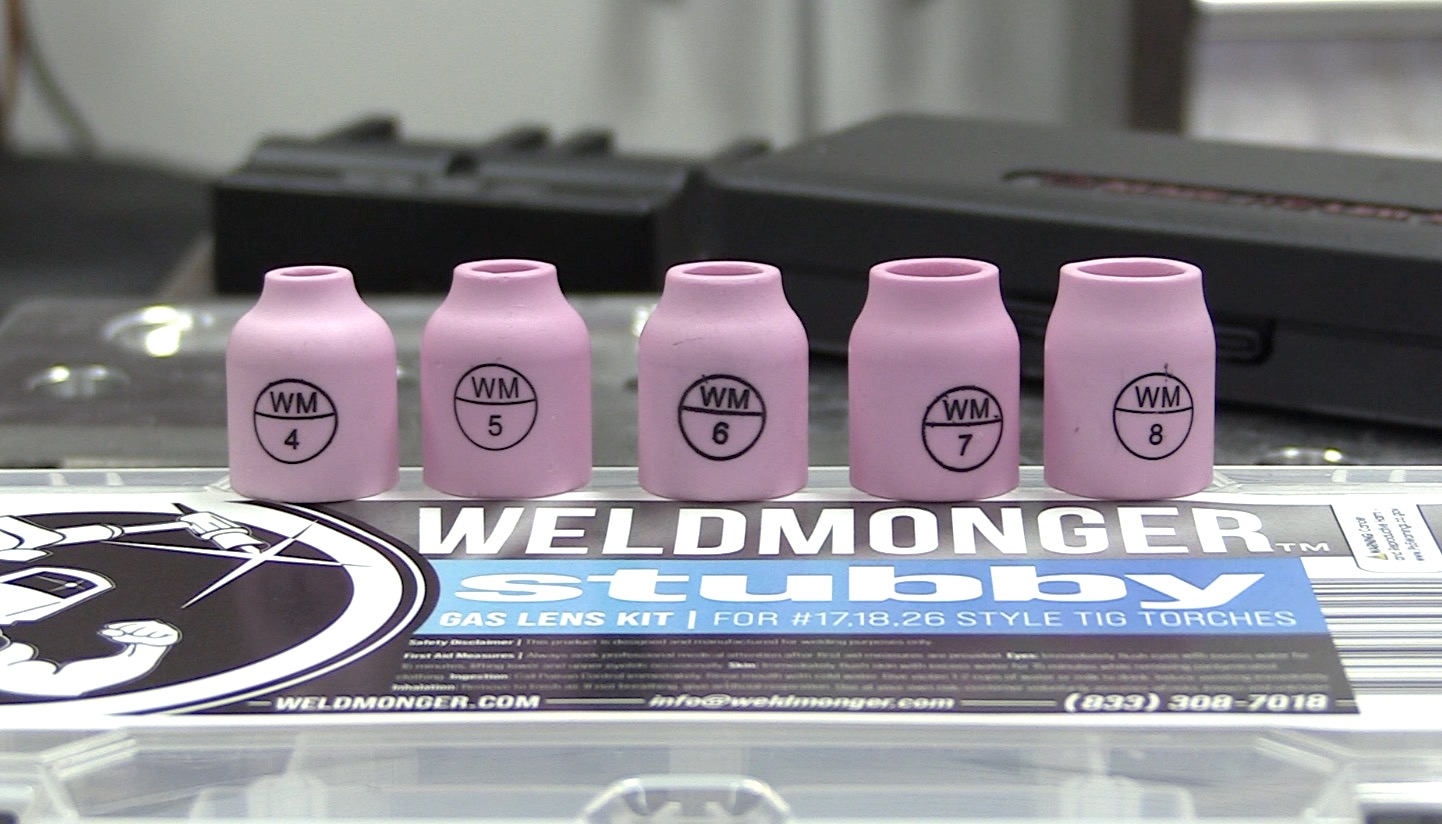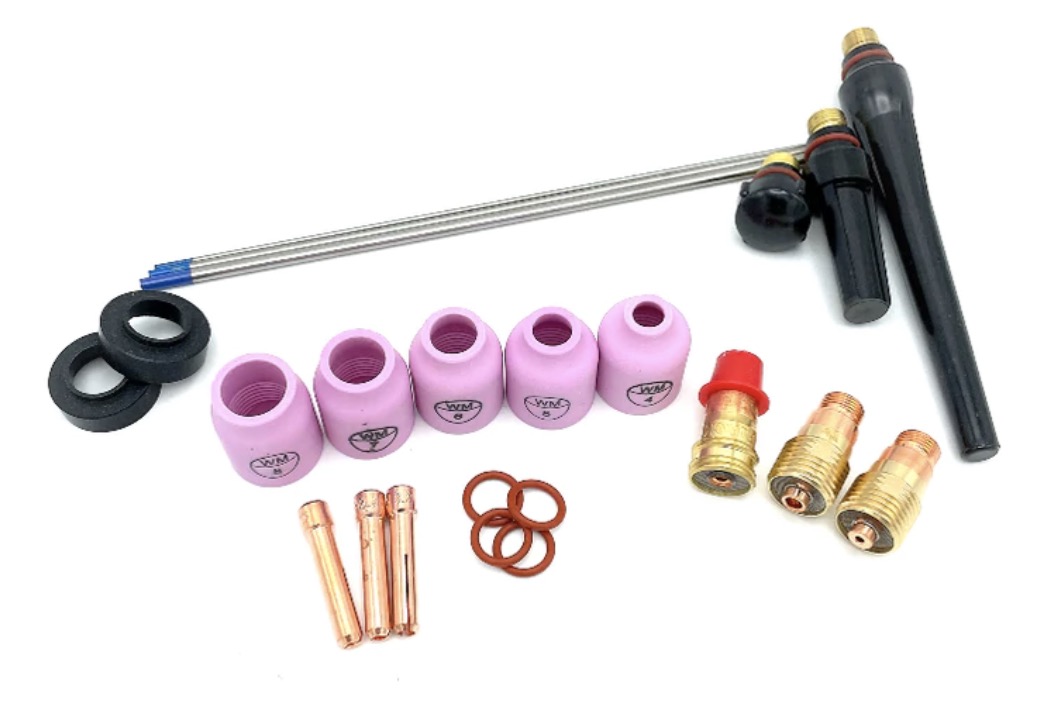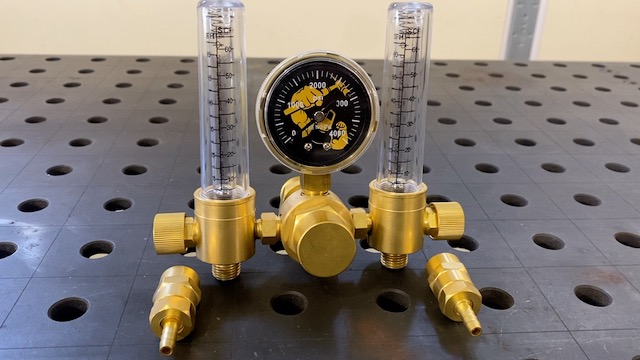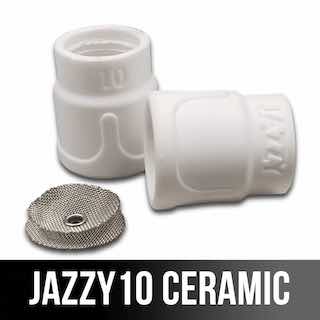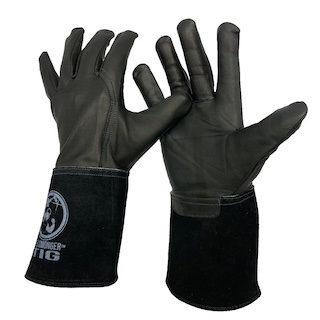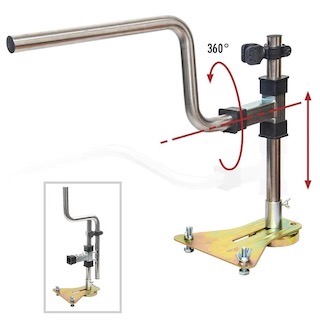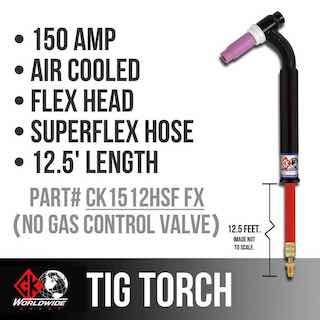Tungsten Inert Gas (TIG) welding
- HOME
- TIG WELDING
- Tungsten Inert Gas
A typical textbook definition of Tungsten Inert Gas (TIG) welding, also known as Gas Tungsten Arc Welding (GTAW), would tell you that TIG is a welding process that uses a "non-consumable" tungsten electrode to create an electric arc for fusing metal together.
But don't get hung up on that term "non consumable" when it comes to the tungsten electrode because even though its not technically consumed in the weld, it is definitely a consumable part of TIG welding because it gets dull or contaminated and needs to be resharpened or cleaned up frequently.
Just like a pencil needs to be sharpened, a tungsten electrode does too and gets shorter and shorter with use.
Here's a simple explanation of how TIG welding works:
- TIG welding machine: The welding machine can be either a DC power source or an AC/DC power source. AC/DC tig welding machines are much more versatile and can weld all types of metals. DC only machines are mostly limited to steels, nickel alloys, copper alloys, and titanium.
- TIG torch: The tig torch is sometimes called a tig gun and holds the tungsten electrode inside with hardware called a collet and collet body. A cup or nozzle, usually ceramic but sometimes glass or other non conductive material lets a shielding gas , usually argon, flow thru to protect the tungsten and the weld from contamination/oxidation.
- Starting the ARC: On more crude tig welding setups the tungsten touches the metal to start the arc. But on modern AC/DC tig welding machines, a high-frequency current is used to establish an electric arc between the tungsten electrode and the workpiece. The tungsten electrode is not supposed to melt during the process, making it technically "non-consumable."
- Shielding Gas: The shielding gas ( usually argon) is released through the torch to create an inert atmosphere around the welding area. This gas shields the molten metal from reacting with the surrounding air, preventing contamination and oxidation.
- The TIG Arc: The heat generated by the electric arc can reach temperatures above 10,000F and melts the base metal. The welder manually manipulates the torch to control the position and movement of the arc. As the metal melts, a small pool of molten metal is formed.
- Filler Metal (Optional): If additional material is needed to strengthen the weld or fill gaps, a filler metal rod can be added manually into the molten pool. The filler metal is melted by the heat of the arc and becomes part of the weld. The term "Autogenous tig welding" is used to indicate welding without filler metal.
- Weld Solidification: As the torch moves along the joint, the molten pool solidifies, creating a fused joint between the metal pieces. The inert gas continues to shield the cooling weld from atmospheric contamination until it solidifies completely.
I have created a No BS TIG workbook for you to help you learn to TIG weld...and its free
Download your Free TIG workbook here
Download your Free TIG workbook here




